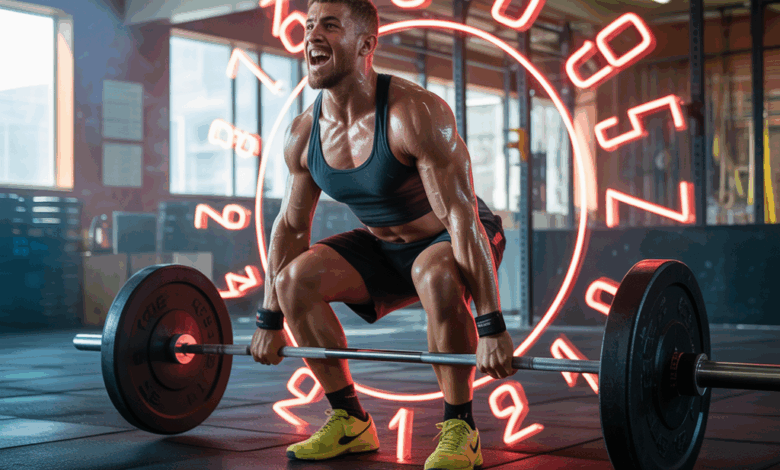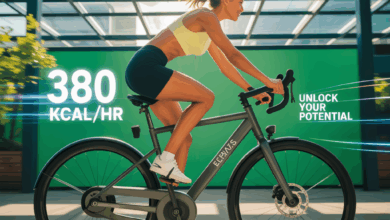How Many Calories Does Deadlifting Burn

Ever finish a heavy deadlift session and wonder, “Did I actually burn enough calories to justify the soreness?” You’re not alone. Whether you’re counting calories for fat loss, curious about strength training’s metabolic impact, or planning a program that blends muscle-building with calorie burn — deadlifts are a cornerstone exercise worth examining.
Why deadlifts are different from cardio — and why that matters for calories burned
Deadlifts are a full-body compound movement that recruits big muscle groups: hamstrings, glutes, lower back, core, and even upper back and grip. Unlike steady-state cardio (running, cycling), the energy cost of deadlifting is influenced heavily by intensity, set/rep structure, rest intervals, and your body weight. That makes “how many calories does deadlifting burn” a nuanced question — but one we can answer with realistic ranges and practical examples.
How many calories does deadlifting burn? (Estimates and examples)
Direct calorie estimates vary, but a useful method uses MET values (metabolic equivalent of task). Vigorous weightlifting is often assigned ~6 METs; moderate lifting ~3–4 METs. Using the standard formula (kcal/min = MET × 3.5 × body weight in kg ÷ 200), here are rough numbers:
- 70 kg (154 lb) person: moderate deadlifting (~3.5 METs) ≈ 4.3 kcal/min (≈260 kcal/hour). Vigorous deadlifting (~6 METs) ≈ 7.35 kcal/min (≈441 kcal/hour).
- 84 kg (185 lb) person: moderate ≈ 5.2 kcal/min (≈312 kcal/hour). Vigorous ≈ 8.82 kcal/min (≈529 kcal/hour).
Important: most traditional heavy deadlift sessions include short bouts of work with long rest periods. A typical 45–60 minute strength session may only include 10–15 minutes of actual high-intensity bar time — bringing a realistic session burn to roughly 200–500 kcal depending on weight, volume, and conditioning. Add the afterburn effect (EPOC) — typically another 6–15% extra calories over 24–48 hours — and total expenditure rises modestly.
Real-world examples
- 5×5 heavy deadlifts with 3–5 minute rests: high intensity but low continuous work time. Net session burn ≈ 200–350 kcal, plus EPOC.
- Deadlift-focused circuit (e.g., trap-bar deadlift + kettlebell swings + sled push, minimal rest): sustained effort can approach 400–600 kcal in 45 minutes.
- Light Romanian deadlifts as accessory work: lower intensity, closer to 150–250 kcal per session depending on volume.
Factors that change calorie burn
- Body weight: heavier people burn more calories for the same activity.
- Intensity and volume: heavier loads and more sets increase metabolic demand.
- Rest intervals: shorter rests increase cardiovascular demand and caloric cost.
- Training experience: beginners often expend more energy learning form and recruiting stabilizer muscles.
- Afterburn (EPOC): the greater the intensity and muscle mass involved, the larger the EPOC effect.
How to maximize calories burned from deadlifting (without sacrificing gains)
You don’t need to turn every session into a metabolic conditioning challenge. Use these strategies to increase calorie expenditure while maintaining strength:
- Pair heavy sets with accessory supersets (e.g., 3–5 heavy deadlift sets followed by a superset of pull-throughs and planks).
- Use a trap-bar for higher rep sets to allow heavier loads and safer high-volume work.
- Implement cluster sets or rest-pause to increase time-under-tension and overall metabolic demand.
- Try EMOM (every minute on the minute) deadlift variations or circuits when your goal is conditioning and calorie burn.
- Shorten rest periods strategically — e.g., 90–120s for strength, 30–60s for metabolic emphasis.
Deadlift variations and how they affect energy cost
Different deadlift styles change muscle recruitment and intensity:
- Conventional deadlift: classic posterior chain focus — high intensity when heavy.
- Sumo deadlift: often allows higher loads for some lifters; can increase total work and calories if volume rises.
- Trap-bar deadlift: more quad involvement and typically easier to perform with higher reps — great for conditioning.
- Romanian/stiff-leg deadlift: higher time-under-tension; great for moderate-intensity metabolic work.
Nutrition, recovery, and lifestyle tips to support calorie goals
- Eat adequate protein to maintain muscle while in a calorie deficit (about 1.6–2.2 g/kg body weight for active individuals).
- Don’t rely solely on exercise calories — track intake and create sustainable calorie deficits when fat loss is the goal.
- Prioritize sleep and stress management: poor recovery increases fatigue and reduces workout quality.
- Combine deadlifting with consistent cardio or conditioning sessions for greater weekly calorie burn.
If you’re building a program, check out tailored workout routines and nutrition guides to pair your lifting with the right eating strategy. For daily habits that support consistent progress, explore our wellness tips.
Practical takeaways: what to expect
- Expect roughly 200–500 kcal per typical deadlift session for most lifters, depending on volume and intensity.
- High-intensity or circuit-style deadlift workouts can push that number higher (400–600 kcal/hour or more).
- Strength-focused sessions yield important muscle and metabolism benefits that compound over time — don’t judge deadlifts only by immediate calorie numbers.
Frequently Asked Questions
It depends on intensity. Moderate deadlifting often burns ~250–350 kcal/hour for an average adult; vigorous deadlifting or circuit-style sessions can burn ~400–550+ kcal/hour. Real session numbers are usually lower because of rest periods.
Deadlifts build muscle and increase metabolic rate, which supports fat loss over time when combined with a calorie deficit. Spot fat loss isn’t possible — combine resistance training with sensible nutrition and cardio for best results.
Wearable devices estimate energy expenditure but can be imprecise for resistance training. Use MET-based calculations for rough estimates, track session intensity and volume, and monitor weight/body composition changes over weeks for practical feedback.
Conclusion: Should you deadlift for calorie burn?
Yes — but for the right reasons. Deadlifting is an efficient way to build muscle, boost metabolism, and burn a meaningful number of calories when programmed correctly. While the exact answer to “how many calories does deadlifting burn” varies, you can expect meaningful energy expenditure plus long-term metabolic benefits. Combine smart programming, proper nutrition, and recovery to get the best results.
Ready to plan your next session? Try a structured program from our workout routines page, or pair your training with guidance from our nutrition guides. Leave a comment with your current deadlift routine — I’ll help you tune it for strength and calorie burn.





